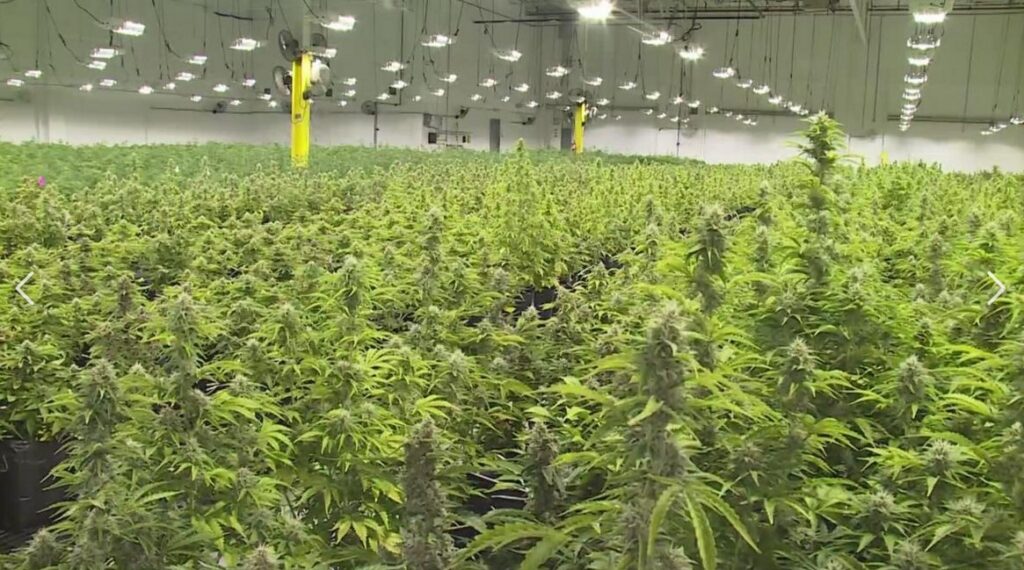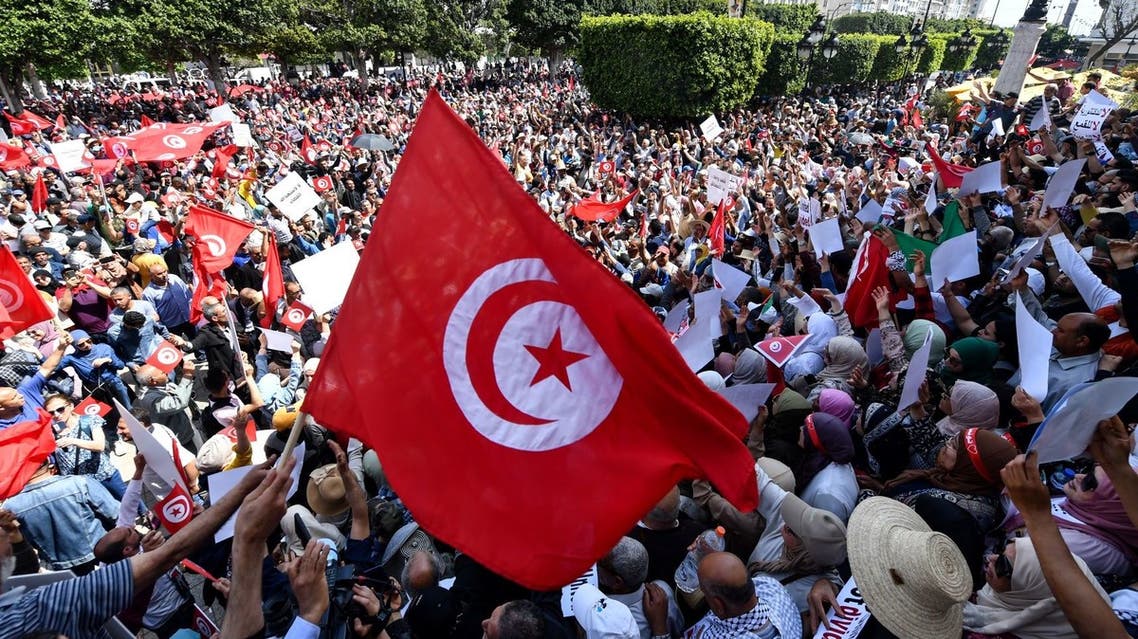PRISON NATION USA
Decriminalized Marijuana Reinvents Racism and Poisoning

The change in marijuana laws across the US raises issues far beyond, “Hey, dude, we can blow a joint now without getting busted.” The racism that permeated the age of criminalization now lurks throughout the phase of decriminalization. The burgeoning business of growing pot raises the specter of corporate agriculture with its threats to human health and natural ecosystems. Are there ways to enjoy weed while challenging racism and corporate domination over the environment?
An Attack on Black and Brown Cultures
Spanish-speaking people, who have lived in the US since it stole half of Mexico’s land, have a tradition of smoking marijuana. Amid a growing fear of Mexican immigrants in the early twentieth century, hysterical claims about the drug became widespread, such as allegations that it caused a “lust for blood.” The term cannabis was largely replaced by the Anglicized marijuana, perhaps to suggest the foreignness of the drug. Around this time many states began passing laws to ban pot.
In “Why Is Marijuana Illegal in the US?” Amy Tikkanen wrote that in the 1930s, Harry J. Anslinger, head of the Federal Bureau of Narcotics, turned the battle against marijuana into an all-out war. He could have been motivated less by safety concerns—the vast majority of scientists he surveyed claimed that the drug was not dangerous—and more by a desire to promote his newly created department. Anslinger sought a federal ban on the drug, and initiated a high-profile campaign that relied heavily on racism. Anslinger claimed that the majority of pot smokers were minorities, including African Americans, and that marijuana had a negative effect on these “degenerate races,” such as inducing violence or causing insanity.
Furthermore, he noted, “Reefer makes darkies think they’re as good as white men.” Anslinger oversaw the passage of the Marihuana Tax Act of 1937. Although that particular law was declared unconstitutional in 1969, it was augmented by the Controlled Substances Act the following year. That legislation classified marijuana—as well as heroin and LSD, among others—as a Schedule I drug. Racism was also evident in the enforcement of the law. African Americans in the early 21st century were nearly four times more likely than whites to be arrested on marijuana-related charges—despite both groups having similar usage rates.
In her 2016 film, 13th Amendment, producer, Ava Duvernay documented drug laws and policies which increased incarceration rates of Black and brown people over the last six decades.
| Year | US Prison Population |
|---|---|
| 1970 | 300,000 |
| 1980 | 513,900 |
| 1985 | 759,100 |
| 1990 | 1,179,200 |
| 2000 | 2,015,300 |
| 2020 | 2,300,000 |
President Nixon’s “War on Crime” of the 1970s targeted protests by the anti-war movement as well as liberation movements by gays, women, and Blacks. “Crime” became a code word for race. Nixon’s Adviser, John Ehrlichman, admitted that the “War on Drugs” was all about throwing Black people into jail to disrupt those communities. These efforts were to gain southern voters.
In the 1980’s, President Reagan’s “War on Drugs” portrayed drugs as an “inner city problem,” allowed for mandatory sentencing for crack cocaine, and tripled the federal spending on law enforcement. The War on Drugs became a war against Black and Latino communities, with huge chunks of Black and brown men disappearing into prison for a “really long” time. The exploding mass incarceration rates felt genocidal. This was again pandering to racist voters.
In his effort to appear “tough on crime” during the 1990’s, President Bill Clinton pushed the $30 billion Federal Crime Bill which expanded prison sentences, incentivized law enforcement to do things we now consider abusive, and militarized local police forces. Increased incarceration rates due to the Clinton administration included introduction of the terms “super predators,” Mandatory Minimum Sentences, “Truth in Sentencing” (which eliminated parole), and “three strikes and you’re out” laws whereby those convicted of three felonies were mandated to prison for life. Such a criminal justice system needs constant feeding of young men and women of color.
Racism during Marijuana Criminalization
Poverty plays a central role in mass incarceration – people put in prison and jail are disproportionately poor. The criminal justice system punishes poverty, beginning with the high price of money bail. The median felony bail bond amount ($10,000) is the equivalent of eight months’ income for the typical defendant. Those with low incomes are more likely to face the harms of pretrial detention. Poverty is not only a predictor of incarceration – it is also frequently the outcome, as a criminal record and time spent in prison destroys wealth, creates debt, and decimates job opportunities.
It’s no surprise that people of color — who face much greater rates of poverty — are dramatically overrepresented in the nation’s prisons and jails. These racial disparities are particularly stark for Black Americans, who make up 38% of the incarcerated population despite representing only 12% of US residents.
Police, prosecutors, and judges continue to punish people harshly for nothing more than drug possession. Drug offenses still account for the incarceration of almost 400,000 people, and drug convictions remain a defining feature of the federal prison system. Police still make over one million drug possession arrests each year, many of which lead to prison sentences. Drug arrests continue to give residents of over-policed communities criminal records, hurting their employment prospects and increasing the likelihood of longer sentences for any future offenses. The enormous churn in and out of correctional facilities is 600,000 persons per year. There are another 822,000 people on parole and a staggering 2.9 million people on probation – 79 million people have a criminal record; and 113 million adults have immediate family members who have been to prison.
One in five incarcerated people is locked up for a drug offense. Four out of five people in prison or jail are locked up for something other than a drug offense — either a more serious offense or a less serious one. The terms “violent” and “nonviolent” crime are so widely misused that they are generally unhelpful in a policy context. People typically use “violent” and “nonviolent” as substitutes for serious versus nonserious
Decriminalization Reinvents Marijuana Racism
The decriminalization which is sweeping across the US carries with it the obvious facts that (a) pot is not and never has been a dangerous drug, and (b) criminalizing drugs has never brought anything positive. This suggests that those who have been victimized were done so wrongfully and therefore should be compensated for the wrongs done to them. However, victims have been predominantly people of color and American racism reappears during the decriminalization phase in the form of trivializing harms done and offering restitution that barely scratch the surface of what is needed.
Prior to addressing the shortcomings for wrongful damages for marijuana laws, the US should publicly apologize for the wrongheaded and thoroughly racist “War on Drugs” and pledge to compensate those who have suffered from it in ways that are comparable to cannabis-related issues below.
Victims should be compensated for time spent in jail. Prisoners might receive compensation for labor performed in prison; but it can be as low as $0.86 to $3.45 per day for most common prison jobs. At least five states pay nothing at all. Private companies using prison labor are not the source of most prison jobs. Only about 5,000 people in prison — fewer than 1% — are employed by private companies through the federal PIECP (Prison Industry Enhancement Certification Program), which requires them to pay at least minimum wage before deductions. (A larger portion work for state-owned “correctional industries,” which pay much less. But this still only represents about 6% of people incarcerated in state prisons.)
There cannot be a serious discussion of compensating victims if many continue to rot in jail. They must be release immediately, regardless of what state they are in. Many of those released have not had records of their arrests, convictions and sentencing cleared (“expunged”). According to Equity and Transformation Chicago, there is a 5-8 year wait for expunging records. Records must be expunged as rapidly as would be done if it really affected people’s lives (because it does).
A core component of repairing harm done to those imprisoned would be prioritizing them (according to amount of jail time served) to receive licenses for growing, processing, transporting and dispensing marijuana. Various states have taken baby steps in the right direction. For example, Chicago’s Olive Harvey College is offering training in cannabis studies to those with past marijuana arrests. Participants receive “free tuition, a $1,000 monthly stipend, academic support and help with child care, transportation and case management.” As of March, 2022 there were 47 studying for jobs as growers, lab directors and lab or quality control technicians.
Another effort pointing forward is New York’s program to grant licenses for marijuana storefronts for individual or family members who have been imprisoned for a marijuana-related offense. An executive for the program expects 100-200 licenses to go to such victims.
Let’s put these model programs in perspective. Nice as they are, 47 students receiving study grants in Chicago and 100-200 retail licenses in New York do not even make a dent in the over 867,000 who have been arrested.
While current programs are infinitesimally small, barriers to legal victims are enormous. Missouri grants licenses only to those “having legal marijuana experience” (such as handling legal medical cannabis) to apply for licensing for growing, dispensing, and processing. Illinois denies licenses and loans to felons, even though 1 in 3 Chicago adults have a criminal record. Illinois also prevents those with cannabis-related convictions from entering the cannabis industry by its high application fees.
Financial barriers for marijuana victims to receive licenses seem insurmountable. People and communities negatively impacted by the War on Drugs have high incarceration rates and lowaverage salaries due to limited job opportunities by ex-felons. Therefore, they lack the financial resources for high non-refundable application fees ($10,000 to $50,000) awarded in lotteries to match the state-designated number of growers, dispensaries, processors, and transporters. In Illinois, access to credit and small business loans are difficultfor persons with criminal records to obtain. Each dispensing organization applicant must have at least $400,000 in liquid assets. That is why people of color cannot participate as owners of legalized marijuana businesses in Illinois.
Industrial Agriculture Poisons Marijuana Cultivation.
Unfortunately, even if all these barriers were to be overcome, there would be serious health issues throughout the marijuana industry, whether legal or illegal. If people of color receive priority in all phases of the industry, then a new form of environmental racism will emerge. People in that industry will become part of the environmental destruction to their communities while they experience damage to their own health from pesticide poisoning.
An excellent review of concerns with cultivation of cannabis by a team working with Zhonghua Zheng finds it heavily associated with environmental and health concerns whether it is grown outdoors or indoors. Needing considerable water, cannabis requires twice as much water as wheat, soybeans and maize. Diverting water to irrigate cannabis crops often results in dewatered streams affecting other vegetation. Water quality is also worsened (especially by illegal growers) by use of herbicides, insecticides, rodenticides, fungucides and nematodes.
Human health problems which can be linked to chronic pesticide exposure include memory and respiratory issues as well as birth defects. Other health effects are weakened muscle functioning, cancer and liver damage. The organization Beyond Pesticides documents serious threats due to two factors: (a) “Pesticide residues in cannabis that has been dried and is inhaled have a direct pathway into the bloodstream;” and, (2) up to “69.5% of pesticide residues can remain in smoked marijuana.”
Perhaps the most overlooked source of pesticide poisoning is due to the synthetic piperonyl butoxide (PBO), which is a synergist, used to boost the effectiveness of active ingredients in pesticides. PBO can itself damage health due to neurotoxicity, cancer and liver problems.
Fertilizers and pesticides make their way into surface water, groundwater and soil, where they threaten the food supply. The high demand for weed affects watersheds, having damaging effects at least for endangered salmonid fish species and amphibians including the southern torrent salamander and coastal tailed frog.
Outdoor cannabis farms disturb fine-sediment adjacent to streams, thereby threatening other rare and endangered species. Its cultivation can contribute to deforestation and forest fragmentation. Fertilizers used for cannabis hurt air quality due to the release of nitrogen. Excess nitrogen increases soil acidification and well as water eutrophication.
Growing cannabis indoors raises its own issues, most notably health risks from exposure to mold and pesticides. Mold in damp indoor environments is associated with wheeze, cough, respiratory infections, and asthma symptoms in sensitized persons.
Perhaps the most surprising problems with indoor cultivation of cannabis is its effects on climate change via electricity. This is due to its annual $6 billion energy costs in the US, making it responsible for at least 1% of total electricity. Inevitably, decriminalization will lead to increased use of energy.
The major sources of energy usage are lighting and microclimate control. High-intensity lighting alone accounts for 86% of electricity use for indoor cannabis. Dehumidification systems are used to create air exchanges, temperature, ventilation and humidity control 24 hours per day. Due to the complexity of indoor requirements, growing one kilogram of processed marijuana can result in 4600 kilograms of CO2 emissions!
Environmental and health problems with growing marijuana will intensify greatly if decriminalization allows control by corporate agriculture. The so-called “Green Revolution” emphasizes use of enormous monocultures which maximize ecological destruction from extreme use of irrigation and fertilizers.
As of early 2022, at least 36 US states have adopted some form of decrimalization of marijuana, adding to the explosion of businesses in every phase of its production. In 2018, Bloomberg reported “Corona beer brewer Constellation Brands Inc. announced it will spend $3.8 billion to increase its stake in Canopy Growth Corp., the Canadian marijuana producer with a value that exceeds C$13 billion ($10 billion).”
Coca-Cola has been eyeing the market for drinks containing CBD which eases pain without getting the user high. Pepsi may have jumped the gun on Coke. A New Jersey hemp and marijuana producer, Hillview, has an agreement with Pepsi-Cola Bottling Co. of New York to makes CBD-infused seltzers which would sell for $40 per eight-pack. The deal aims to cover Long Island, Westchester and all five New York boroughs.
With industrial giants like Coke and Pepsi jumping into the cannabis market, it is a sure bet that they will not be buying marijuana from thousands of mom-and-pop growers. Look for big soft drink to seek contracts with big ag.
The commercial growth of crops based on monoculture (a single or very few crops grown) becomes a breeding ground for pests, creating an artificial need for control via chemical poisons. A fundamental principle of organic agriculture is that growing 10, 15 more more plant species together reduces any need for chemicals. In the corporate ag model, if the single species grown is invaded by pests, then the entire crop can be lost. In the organic model the farmer anticipates that 1, 2 or 3 may be hurt by pests, but the majority will survive.
According to farmer Patrick Bennett, “for a fraction of the cost of a single bottle of synthetic liquid fertilizer, you can get the same, if not better yield, flavor, and cannabinoid content in your crop at home by simply using organic farming practices.” Marijuana has been grown for centuries (or millennia) without pesticides. Current organic growers have found five plant-based insecticides that protect their crops well:
- Neem oil is “extracted from the seeds and fruit of the tropical neem tree, [and] controls many insects, including mites, and prevents fungal infections, like powdery mildew.”
- Azadirachtin controls “control over many insects, including mites, aphids, and thrips” but does not provide fungal protection.
- Pyrethrums kills insects that attack cannabis plants, including thrips. Pyrethrins, however, the synthetic version of pyrethrums, should not be used due to their environmental persistence.
- Bacillus Thurengensis (BT) is very effective in controlling larval insects and fungus gnats.
- Beneficial Nematodes are microscopic organisms occurring naturally in soil, keeping it healthy while controlling soil-born pests such as fungus gnats.
Techniques such as these have proven effective. Mike Benziger told interviewer Nate Seltenrich that he grows fruits, vegetables and medicinal herbs along with cannabis. He includes multiple plants that attract insects like ladybugs and lacewings that gobble up harmful mites and aphids. Organic growers often rely on mulching and crop rotation. Such methods are especially critical for protecting workers growing the plants, neighboring wildlife, farm owners, distributors and, of course, marijuana users.
As of 2015, Maine was prohibiting use of any pesticides. Yet, its is important to remember that legislation can be weakened or repealed by subsequent laws, making it critical to have enduring guidelines. Such guidelines should include practices like those in Washington DC and Maine which require producers to demonstrate knowledge of organic growing methods.
Moving Forward
Since federal law classifies marijuana as a narcotic there are no federal guidelines for growing it. This makes it tempting to demand that it be declassified and brought under the auspices of bodies like the Environmental Protection Agency. This is a worthwhile goal, but the problem is that federal and state bodies are controlled by corporate powers seeking the weakest standards possible. Goals such as the following should be stated to counter racism and have genuine environmental protection with real (not fake) organic standards:
1. Restitution must begin with an apology which acknowledges that criminalization of marijuana included an attack on those cultures using it; was a part of a greater attack which used drugs as one of many weapons to destroy communities; and caused suffering for an enormous number of individuals.
2. All communities affected by criminalization of marijuana and the larger attack upon them should decide what financial and cultural restitution they should receive.
3. Individuals harmed by marijuana criminalization should receive financial compensation for any arrest, trial, incarceration and post-incarceration damages. Funds for growing, preparing and dispensing legalized marijuana should be made in direct proportion to the harm that individuals have suffered – those who have been harmed the most should receive the greatest compensation. In particular, the greater the harm an individual has suffered, the higher priority that individual should have for receiving a license related to dispensing marijuana.
4. Organic growing must be a core component of protecting the health of marijuana workers, producers and users. All who grow marijuana must receive free education on how to do so without the use of chemical poisons (“pesticides”). This must include how to intersperse marijuana with other crops so that pests are not as threatening as they are with monocultures. All who grow, process and disperse marijuana must obtain certification that their product is free of chemical contaminants. There should be no limitations on the number of marijuana plants an individual may grow, as long as those plants are grown with genuine organic principles.
Prior to decriminalization, health and environmental damages of growing and using marijuana were more or less similar for all ethnic and cultural groups. But that will not continue to be the case if restitution for damages from criminalization are put into place. If those hurt most by harassment and incarceration for marijuana receive priority for licenses to produce and distribute cannabis, they will receive the most pesticide poisoning if organic methods are not required. The only way to avoid continued harm to those previously victimized is to employ organic cultivation.
Abolition of exploitation of all agricultural workers requires similar restrictions on chemical use when growing all herbs, fruits and vegetables. Organic growing of cannabis should become a model for transferring production via corporate megafarms using mono cropping, chemicals, and exploited labor to organic methods based on small farms, chemical-free growing for local communities and good treatment for workers encouraged to form strong unions for collective self-protection.
[The Green Party of St. Louis adopted a marijuana perspective that synthesizes anti-racism with organic growing principles. You can read it at: marijuana-platform.]










.jpg)
.jpg)
.jpg)
.jpg)





